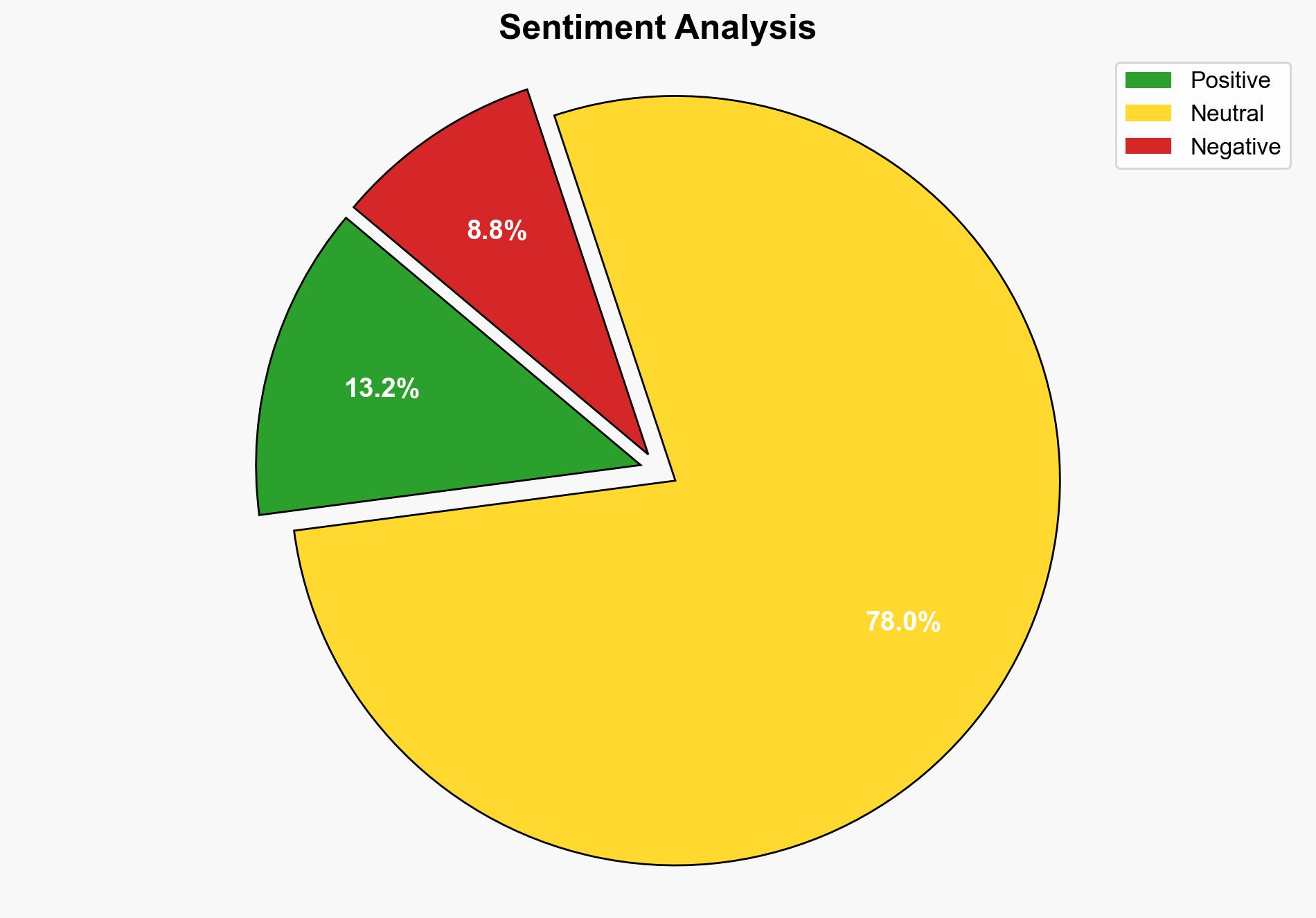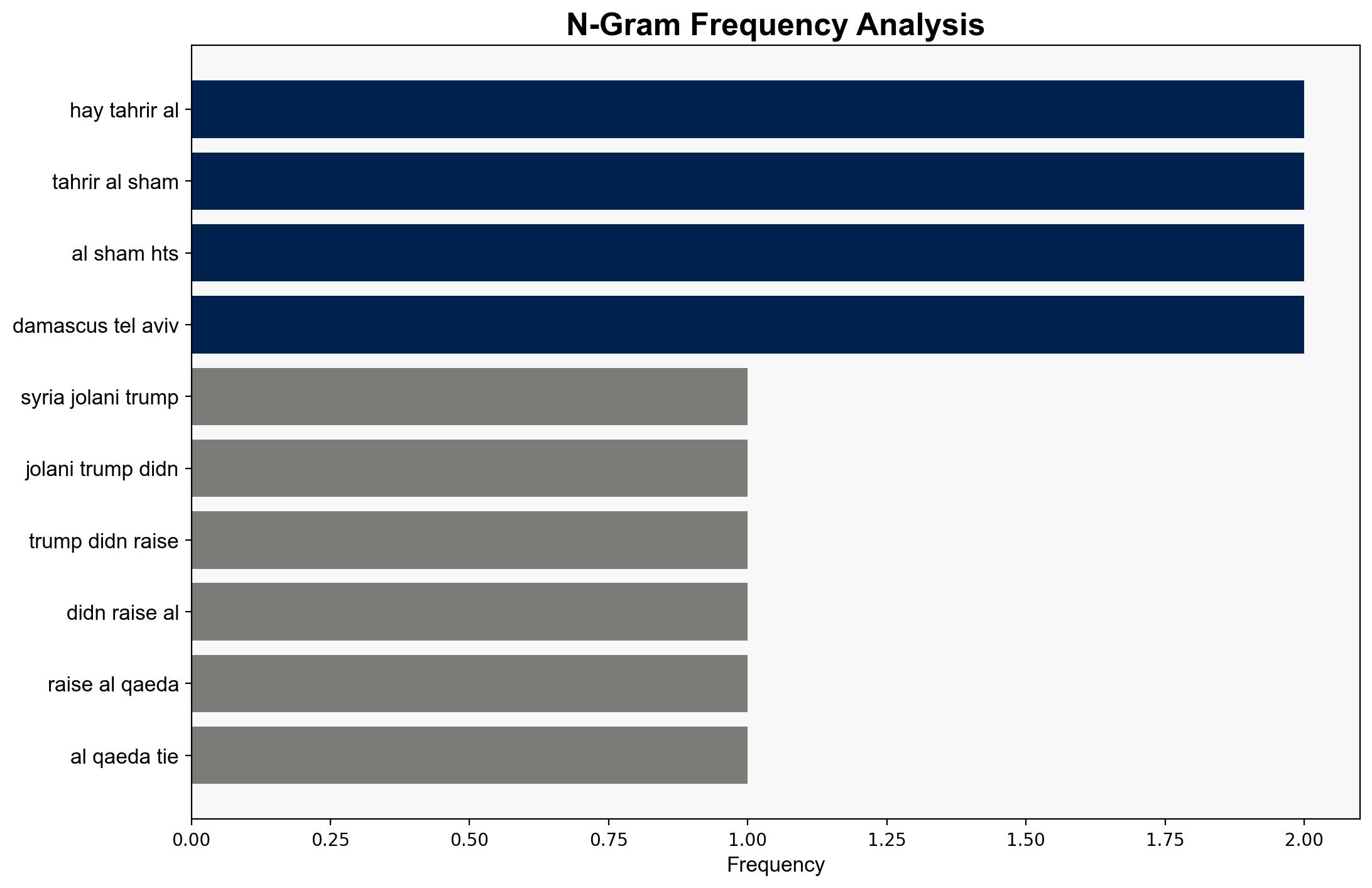Syria’s Jolani says Trump didn’t raise al-Qaeda ties at White House meeting – Globalsecurity.org
Published on: 2025-11-12
AI-powered OSINT brief from verified open sources. Automated NLP signal extraction with human verification. See our Methodology and Why WorldWideWatchers.
Intelligence Report: Syria’s Jolani says Trump didn’t raise al-Qaeda ties at White House meeting – Globalsecurity.org
1. BLUF (Bottom Line Up Front)
There are two primary hypotheses regarding the meeting between Abu Mohammed al-Jolani and President Trump: (1) The meeting was part of a strategic shift by the U.S. to engage with non-state actors in Syria to counterbalance Iranian influence, or (2) The meeting was primarily focused on economic opportunities and regional stability, with al-Qaeda ties being a non-issue due to HTS’s current stance. The most supported hypothesis is the latter, given the lack of evidence suggesting a significant policy shift by the U.S. towards HTS. Confidence Level: Moderate. Recommended action includes monitoring HTS’s activities for shifts in alliances and ensuring diplomatic channels are aware of potential changes in U.S. foreign policy.
2. Competing Hypotheses
Hypothesis 1: The meeting signifies a strategic shift by the U.S. to engage with HTS as a counterbalance to Iranian influence in Syria.
Hypothesis 2: The meeting was focused on economic opportunities and regional stability, with al-Qaeda ties being a non-issue due to HTS’s current stance.
Hypothesis 2 is more likely due to the lack of public statements or policy changes indicating a U.S. shift towards supporting HTS. Additionally, the focus on investment opportunities suggests economic and stability concerns were prioritized.
3. Key Assumptions and Red Flags
Assumptions: The U.S. maintains a consistent policy towards terrorist organizations. HTS’s current stance is not aligned with al-Qaeda’s global agenda.
Red Flags: Lack of transparency in the meeting details. Potential misinformation from involved parties.
Deception Indicators: Jolani’s statements may be aimed at reshaping HTS’s image to gain legitimacy.
4. Implications and Strategic Risks
The meeting could lead to increased legitimacy for HTS, potentially altering power dynamics in Syria. If the U.S. is perceived as engaging with HTS, it may strain relations with allies opposed to HTS. There is a risk of misinterpretation by regional actors, leading to escalations in political or military tensions.
5. Recommendations and Outlook
- Monitor HTS’s public statements and actions for shifts in alliances or strategies.
- Engage with regional allies to clarify U.S. stance and mitigate potential diplomatic fallout.
- Best Case: HTS moderates its stance, contributing to regional stability.
- Worst Case: Misinterpretation leads to increased tensions between the U.S. and regional allies.
- Most Likely: Continued ambiguity in U.S. policy towards HTS, with limited immediate impact.
6. Key Individuals and Entities
Abu Mohammed al-Jolani, Donald Trump, Hay’at Tahrir al-Sham (HTS).
7. Thematic Tags
Regional Focus: Middle East, Syria, U.S. Foreign Policy, Non-State Actors, Counterterrorism.
Structured Analytic Techniques Applied
- Causal Layered Analysis (CLA): Analyze events across surface happenings, systems, worldviews, and myths.
- Cross-Impact Simulation: Model ripple effects across neighboring states, conflicts, or economic dependencies.
- Scenario Generation: Explore divergent futures under varying assumptions to identify plausible paths.
Explore more:
Regional Focus Briefs ·
Daily Summary ·
Methodology





